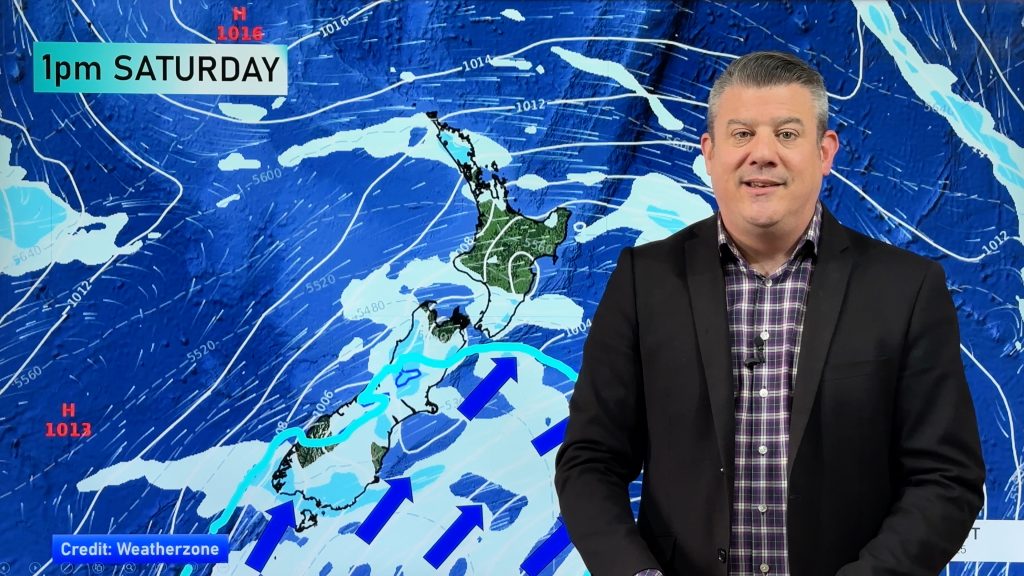ClimateWatch: How JUNE & WINTER are shaping up as El Niño slowly builds (+13 Maps & Video update)
1/06/2023 5:00am

> From the WeatherWatch archives
El Niño continues to slowly form but the weather pattern in NZ still looks to be wetter and warmer for the month of June as a chaotic, neutral, weather pattern continues on this month. Despite June kicking off with colder airflows from the south, the long term trend is for milder than average airflows to return. At least two large low pressure zones look to cross New Zealand in the first half of June bringing variety in wind directions, temperatures and rainfall – but most places receiving rain and leaning wetter than average.
It looks as though, generally speaking, NZ has about 60 to 200mm coming over the first half of June – this is still leaning wetter than average for many regions. In fact, most of the North Island and half of the South Island may be wetter than normal – and all of NZ looks to be half a degree to over 1 degree above normal temperature-wise this coming month.
WeatherWatch.co.nz says the chaotic pattern in NZ means we have distinct lack of frosts so far this year, across both islands and including the Deep South which has had very few below zero nights. In fact some places didn’t have a frost in Autumn 2023, which is remarkable.
Australia’s weather pattern, however, is increasingly looking more El Niño-like, with high pressure being fairly stubborn over the northern half of the country, and rainfall in the southern half of Australia being normal to even below normal. This drier weather pattern to our west is expected to drift more eastwards over NZ later this year. Aussie’s big highs have brought a number of frosty nights to VIC, NSW and even inland QLD. In fact, on the last day of Autumn (May 31) Brisbane was colder than Dunedin at dawn.
Over the coming months WeatherWatch.co.nz expects El Niño to develop, which should encourage more high pressure in the Tasman Sea and north of NZ, and more westerlies over NZ itself. This set up tends to make the West Coast wetter, the North Island’s west coast showery and cloudier (but sometimes drier than average) and eastern and inland parts of New Zealand much drier and warmer than usual.
That’s the text book set-up for El Niño anyway, but of course we’re basically two large mountainous islands partially in the Roaring Forties – so we’ve still got a fair amount of chaos to contend with too. All NZ weather forecasters should factor in the chaos in our part of the world – a good example of our weather chaos is that we just had three consecutive La Niña events, but only the third one altered NZ’s weather pattern – the other two brought drought, which isn’t normally what you’d expect at the top of country in La Niña. It’s too simplistic to simply connect a line from the equator and say this will impact NZ – so we always have to factor in the Roaring Forties/Southern Ocean weather patterns too.
You can read more from Australia’s Bureau of Meteorology (BoM) about the current El Nino set-up here.
WeatherWatch.co.nz says that the general trend for June indicates a big variety of highs and lows in the NZ area and shows we’re not yet in an El Niño weather pattern… its still very much chaotic and neutral for New Zealand.





THE BIG PICTURE – HOW THE HIGHS & LOWS ARE SHAPING UP IN JUNE…



UPCOMING RAINFALL…





- ClimateWatch is a premium product made by WeatherWatch.co.nz for RuralWeather.co.nz – in association with our official business partnership with IBM.
- WeatherWatch.co.nz is proud to be a small Kiwi business providing unique services to help farmers, growers, tradies and businesses across all parts of New Zealand, both private and public sector. Contact us if you need commercial services tailored to your requirements.
Comments
Before you add a new comment, take note this story was published on 1 Jun 2023.





Add new comment
Nick on 1/06/2023 5:52am
Just wondering when the Kapiti Coast will get a drier than average season. We don’t get Auckland’s publicity but we get a lot of rain.
Reply